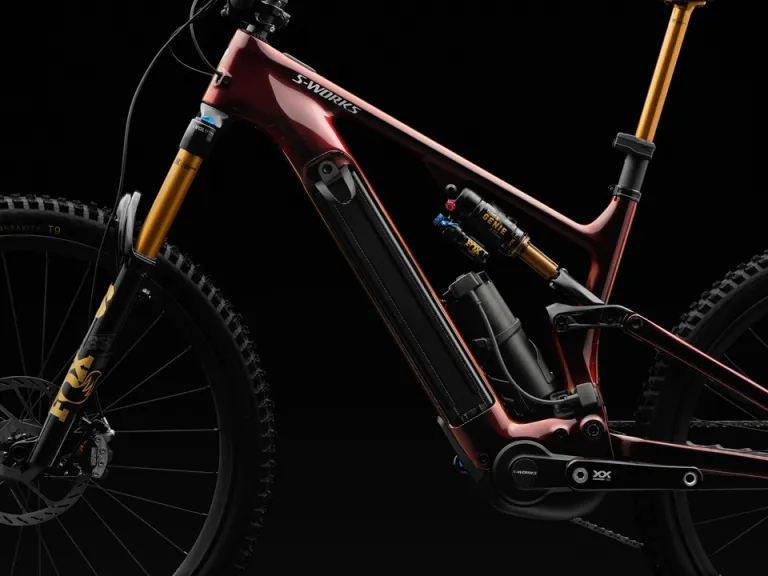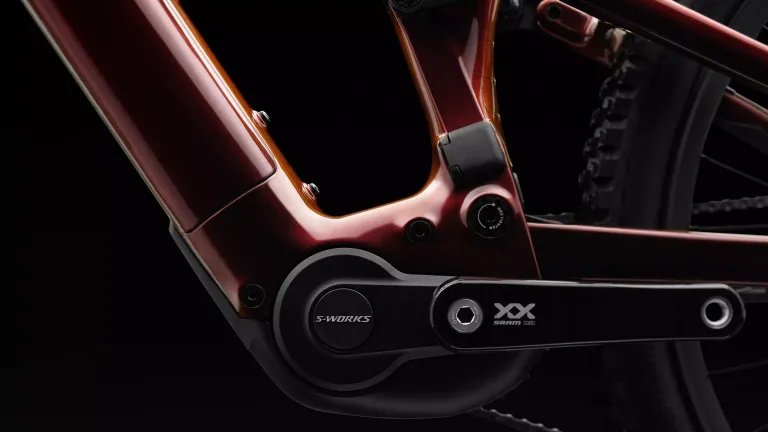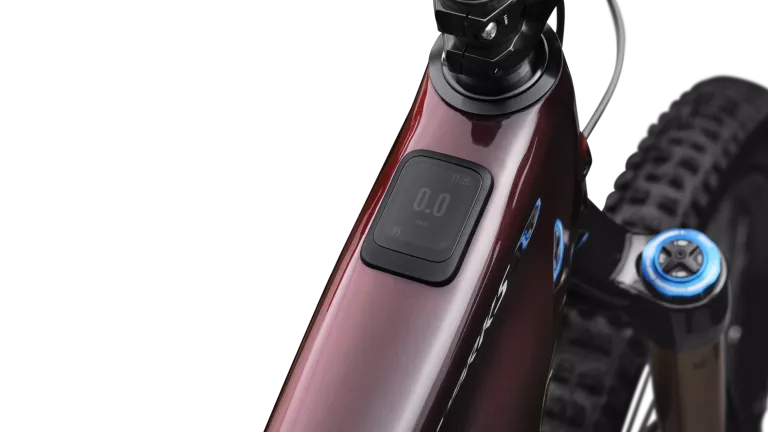Rumour Confirmed: 2026 Specialized Turbo Levo is Here and This is What You Need to Know
For 2025, Specialized is turning up the dial on its motorized lineup—starting with the latest evolution of the Turbo Levo. Building on the strengths of its predecessor, the new Levo steps confidently into the future with more power under the hood, courtesy of a completely redesigned motor.
One of the standout upgrades is the 840Wh battery, offering extended range for those big-mountain missions or all-day adventures. And in a welcome touch of practicality, Specialized has also added in-frame storage, making it easier than ever to carry tools, snacks, or other trail essentials without the need for bulky packs.
The suspension numbers remain familiar, with 150mm of rear travel paired to a 160mm fork, giving the bike that perfect blend of control and playfulness. As always, riders can fine-tune their ride feel thanks to Specialized’s signature adjustable geometry, allowing for a wide range of configurations to suit different trails and styles.
One of the standout features of the 2026 Turbo Levo is the introduction of three different battery options. This offers riders the flexibility to choose the best battery based on their specific needs, whether it’s for long rides requiring extended range or shorter rides with a lighter setup. The option to swap out batteries also means more flexibility in terms of ride duration and terrain, catering to a wide range of riding styles.

The stock battery is a hefty 840Wh, tipping the scales at 9.3 pounds, but if you're weight-conscious or riding shorter loops, there's a 600Wh option, along with a 280Wh range extender that fits neatly in the bottle cage. Regardless of battery setup, there's also in-frame storage in the head tube area, accessed by removing the main battery. A small zippered bag—held in by magnets—can stash a spare tube, tools, or anything else you don’t need immediate access to (i.e., not your gummy bears).
You can even run the Levo solely on the range extender, which drops motor output by 50%, or go completely unplugged for a purist experience… although with the bike still weighing around 43 pounds, that’s definitely not for the faint of heart.
Underneath it all is an entirely new carbon frame, with clean lines and a clever side-door access to the battery in the downtube. In an age where many brands are making batteries increasingly difficult to remove (sometimes requiring full motor removal), Specialized keeps things simple: a single hex key is all you need to swap the battery.
111 Nm of torque and up to 720 watts of peak power
One of the big stories here is the new motor system. Similar to Bosch’s “Race” edition approach, Specialized is giving the S-Works Levo a custom-tuned motor, delivering 111 Nm of torque and up to 720 watts of peak power. The other models use the standard Specialized 3.1 motor, which still pushes 101 Nm and 666 watts—no slouch by any means, but that extra punch in the S-Works could be a deciding factor for aggressive riders looking for maximum boost.

The motor in the new Turbo Levo is notably more like the one found in the Levo SL, offering significantly less resistance when it's turned off. This is a huge benefit for riders who want to feel like they’re riding a traditional mountain bike when the motor isn’t engaged. The lower drag makes it easier to pedal manually, especially on descents or when the motor is not being used.
Specialized’s motor (still manufactured by Brose) uses larger, full-metal gears treated for extra durability. There’s been a clear effort to cut down on noise and vibration, and based on trail impressions so far, it’s paid off—the motor feels smooth and relatively quiet, even when working hard.
Tech & Tuning:
Specialized continues to lead the pack when it comes to integration and customization, and the Mastermind TCU on the 2025 Turbo Levo is a prime example. Mounted neatly in the top tube, this display offers a wide range of customizable screens, plus Bluetooth connectivity for pairing with external devices. Through the Specialized app, riders can also fine-tune motor behavior—whether that means dialing things down to conserve battery or cranking up the output for maximum distance and speed.
The Levo comes with Eco, Trail, Turbo, and Auto modes, plus the highly useful Micro Tune and Dynamic Micro Tune, which are accessible from the new handlebar remote. These modes let riders adjust assistance in 10% increments, offering total control over the ride feel.

Dynamic Micro Tune in particular stands out—it provides full motor power when you're really putting down the watts, but dials it back to conserve energy when you're cruising. It's become a favorite mode for many thanks to its smart, responsive power delivery.
Speaking of the handlebar remote, it’s been redesigned with a new toggle switch between the power and walk-assist buttons. It may take a little getting used to, especially if you're coming from the previous Levo’s two-button setup, but it quickly becomes second nature.
Find My app integration and remote lock
Just like the latest Bosch-equipped e-bikes, the new Levo also features a lock function that helps deter theft by disabling the motor when activated. Also the new Levo allows you to Sync your bike’s onboard computer with your iPhone, and it becomes trackable directly in the Find My app. In collaboration with Apple, we’ve created this first-of-its-kind integration so you can pedal with peace of mind and focus on what matters most—the ride.

Class 3 Mode: The Controversial Feature
Specialized has included a Class 3 unlock option on U.S. models, allowing the Levo’s max assist speed to be bumped up to 28 mph. It’s a feature designed with road commutes in mind—perfect for riders who pedal to the trailhead on pavement.
Activating it is simple, and once enabled, a large Class 3 badge appears on the screen. While it doesn’t offer much advantage on steep climbs, it could noticeably increase average speeds on rolling terrain. That said, it’s a bit like leaving Halloween candy out with a “Take One” sign—there’s definitely potential for misuse in areas where Class 3 e-bikes aren’t allowed.
Geometry Adjustments
True to Specialized form, the Levo’s geometry is as versatile as ever. The base numbers are similar to the outgoing model, but riders have multiple adjustment points:
- Bottom bracket height: adjustable with a flip chip at the rear shock mount
- Chainstay length: +/- 9mm using flip chips on the rear triangle
- Head angle: +/- 1° via the upper headset cup
These adjustments work mostly independently, so changing one setting won’t drastically impact the rest of the bike’s feel—great news for riders who like to fine-tune their setup without throwing everything out of balance.

Fast Charging for the Forgetful
Finally, for riders who tend to forget to plug in their bikes after a ride (we’ve all been there), Specialized is releasing a new 12A “Super Charger”. It’ll take the 840Wh battery from 0% to 80% in under an hour—a total game changer for anyone squeezing in last-minute rides. There's also an Eco charging mode, designed to extend the overall lifespan of the battery by reducing charging stress.
Trail Manners & Downhill Confidence
If you’ve spent time on a Stumpjumper, the Levo will feel instantly familiar. The two share similar geometry, and that makes the Levo feel like a natural extension of Specialized’s trail DNA. After testing various geometry settings, I found my sweet spot with the long chainstay, low BB, and neutral head angle. That combo balanced high-speed stability on steeps with enough agility to stay playful on flatter, flowier sections.
A lot of curiosity has been swirling around the new Genie shock, and yes—it’s a bit different. But in practice, it’s all about better tuning. The shock adds more support and bottom-out resistance, even on a relatively linear suspension platform. With a single volume spacer in the outer chamber (stock setup), I never felt the need to tinker further—the shock and fork were well-matched, offering plenty of support without going overly firm or feeling vague.
Even when launching the Levo into chunky, high-speed terrain, I never felt a harsh bottom-out. The Genie’s design does a great job of managing big hits—especially important when you’re coming back down to earth on a 50+ pound bike.
Weight Watchers, Take Note
That’s the other thing: the Levo is not light. At around 52 pounds (23,5Kg) with the 840Wh battery, it’s heftier than competitors like the Norco Sight VLT (49 lbs - 22Kg, 800Wh) or the Transition Relay (47 lbs - 21,4Kg, 600Wh + optional extender).
And yes—weight matters. The Levo still handles well, but it doesn’t feel quite as lively or nimble as some of the lighter options out there. With similar geometry, other bikes manage to feel more playful and less “e-bikey.”
If anything, the Levo feels like it’s stuck between categories. It’s not quite a long-travel bruiser, even though it’s approved for up to a 180mm fork. Personally, I wouldn’t mind if Specialized leaned into that and created a longer travel variant—something that embraces the weight and turns the Levo into a full-blown enduro smasher.
That said, don’t get the wrong impression. The Levo is far from sluggish. It’s still a weapon on the descents, especially when the trail gets rough. That 150mm of travel is well-utilized, and the bike has a confident, planted ride feel that rewards aggressive riding.